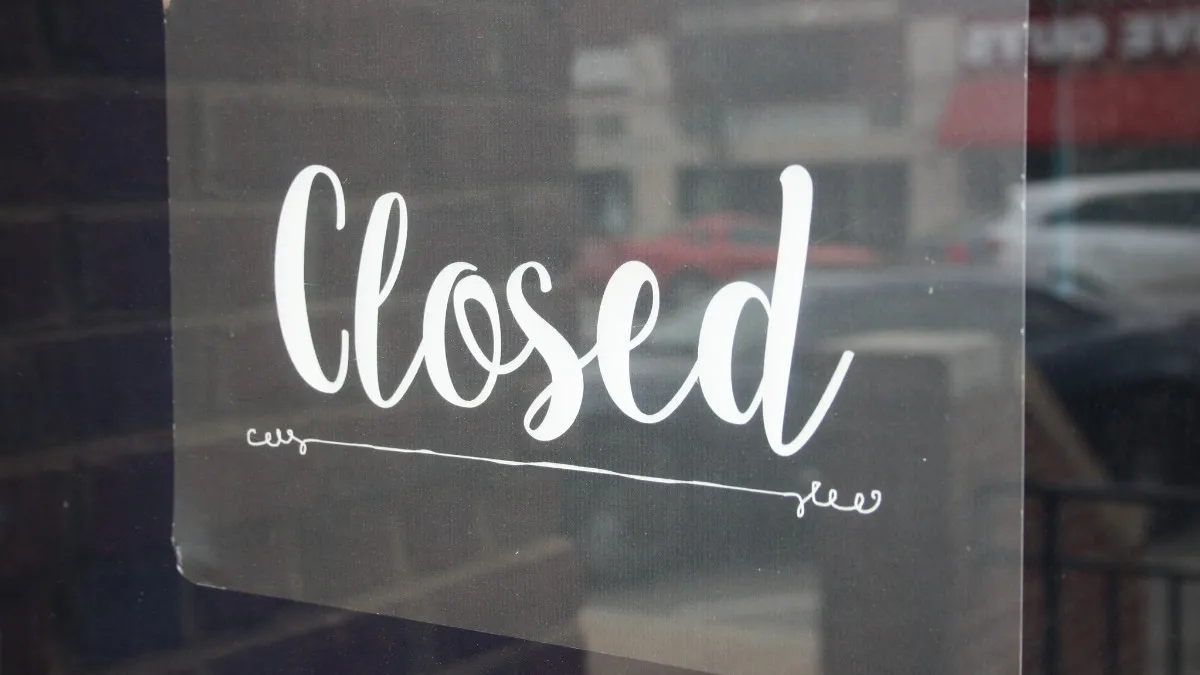Dive Brief:
- About 87% of small businesses that applied for a loan, a line of credit or a cash advance in 2020 with a credit union reported being satisfied, according to a Federal Reserve small-business credit survey released Wednesday. That proportion outweighs borrower satisfaction with small banks, defined as having less than $10 billion in assets (81%); large banks, with $10 billion or more (68%); finance companies (60%); and online lenders (43%).
- Particularly, when asked about the support they received during the pandemic from their primary financial services provider, 70% of community development financial institution (CDFI) customers reported being satisfied, compared with 61% for small banks, 48% for credit unions, 41% for large banks, 26% for finance companies and 18% for online lenders, the survey found.
- The survey also highlighted a perceived disparity in financial conditions between businesses owned by whites and nonwhites. For example, 57% of businesses overall characterized their financial conditions as fair or poor. But that proportion spikes to 77% for Black-owned businesses, 79% for Asian-owned businesses and 66% for Hispanic-owned businesses. The survey found another racial disparity. About 13% of businesses overall cited credit availability as the most important challenge they’ll face over the next year. That number rises to 30% among Black-owned firms, outpacing concern for weak demand and government-mandated restrictions and closures.
Dive Insight:
The Fed’s annual survey, canvassing 15,000 businesses, gives another perspective on the effectiveness of pandemic-prompted relief programs. About 91% of respondents applied for emergency funding during the pandemic, the survey found. For 82%, that was the Paycheck Protection Program (PPP). About 47% reported applying for an Economic Injury Disaster Loan (EIDL).
About 77% of PPP applicants reported receiving all of the funding they sought. But borrowers reported varying experiences depending on their lend. About 78% of those who applied for PPP through a small bank said they received all of the funding they asked for. However, that proportion decreased to 70% for applicants through large banks; 63% for credit unions; 47% for online lenders; 44% for CDFIs; and 41% for finance companies.
About 64% of respondents said they would apply for additional government-provided assistance if it were made available — the survey was conducted in September and October, after PPP’s initial run but before the program reopened last month. Nearly 40% of those companies said they did not expect to survive until sales return to 2019 levels without more government aid.
Roughly 75% of the $72.7 billion in PPP loans the Small Business Administration (SBA) approved in January came from second-draw applications, the agency reported Tuesday.
Among businesses that did not apply for a PPP loan, 37% said they thought they wouldn’t qualify — either for the loan or for forgiveness. About 23% said they found the process too confusing. The SBA issued about 20 pieces of new guidance during the initial April-to-August run of PPP.
About 46% of respondents that received all the funding they sought through PPP still had to cut their workforce. That compares with 71% of businesses that needed to cut staff without PPP help. About 80% of businesses that received a PPP loan said they expected full forgiveness, according to the survey.
The report painted a dire picture of the pandemic’s impact. More than half (53%) said they expected total sales revenues for 2020 to be down by more than 25%. About 88% indicated sales had not yet returned to normal. About 26% closed temporarily, 56% reduced their operations, and 48% modified them.
The proportion of companies with more than $100,000 in debt rose from 31% in 2019 to 44% in 2020. Furthermore, the net share of firms expecting employment growth in 2020 was 14%, compared with 38% in 2019.
Among firms that sought a loan, line of credit, or cash advance, the survey found a sharp drop in the proportion that applied through an online lender — 20% in 2020, from 33% in 2019. Likewise, net satisfaction with online lenders — the percentage of respondents satisfied minus those who reported dissatisfaction — plummeted from 37% to 25% between 2019 and 2020. However, about 35% of businesses with lower credit scores turned to online lenders, compared with 11% of firms with higher credit scores.














